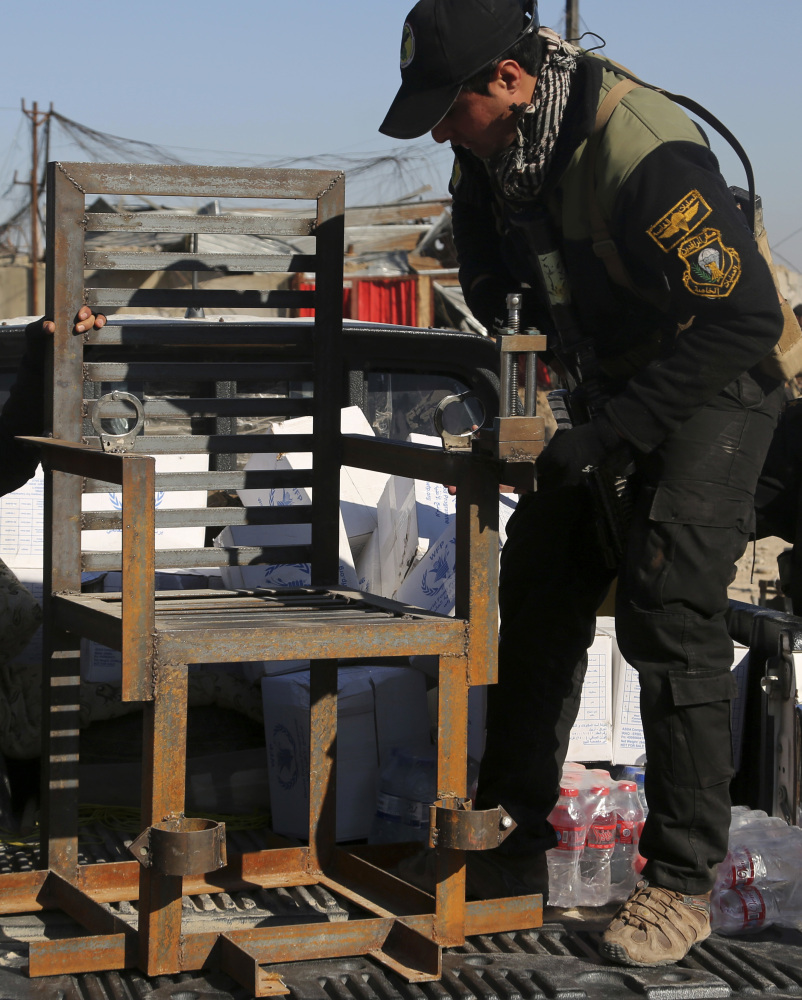MOSUL, Iraq — Small stalls and carts have sprung up outside the bombed-out buildings in eastern Mosul, selling meat and vegetables, cigarettes and cellphones to the thousands of civilians still living in neighborhoods where the Iraqi military has driven out the Islamic State group.
As the grinding military operation enters its fourth month, about a third of the northern city is under government control. While more than 100,000 people have fled the fighting, many have remained despite no electricity or running water.
Zaid Khaled sells frozen chicken from a stall in the main traffic circle in the Zahour neighborhood. Every morning, he takes a bus to the easternmost edge of Mosul to buy the poultry in a market.
Because there’s no power, he must sell his whole supply each day or lose money. “Slowly, as people are able to go back to work, life will return to normal, step by step,” he said.
On the edge of the neighborhood, hundreds of people must cross a makeshift bridge to buy food and water, or reach medical aid. Isam Fathi Younis lives just a few blocks from the front line. He wheeled his elderly mother across the bridge Thursday in search of a doctor after she began to have trouble breathing.
His family waited in their home for days before fighting subsided enough to venture out on the streets, he said.
On Tuesday, Lt. Gen. Talib Shaghati told The Associated Press the whole city could be recaptured from IS in another three months, or less. When the operation began in October, Iraqi leaders had predicted they would retake the city before 2017 began, but progress has been slow amid fierce counterattacks from the extremists.
Although buses, taxis and private cars have begun to clog the streets, armored military vehicles wind through the traffic in a reminder that the battle is not far away.
One group of soldiers carried a metal chair – a seemingly ordinary object until a closer look revealed that cuff-like restraints had been welded to its arms and legs. The soldiers said they said they recovered it from an IS prison. “They used this for torture,” said special forces Col. Ali Kenani.”The clamp was used to hold a finger like this,” he said, slipping his hand into the vice on the end of one of the arms.
Copy the Story LinkSend questions/comments to the editors.



Success. Please wait for the page to reload. If the page does not reload within 5 seconds, please refresh the page.
Enter your email and password to access comments.
Hi, to comment on stories you must . This profile is in addition to your subscription and website login.
Already have a commenting profile? .
Invalid username/password.
Please check your email to confirm and complete your registration.
Only subscribers are eligible to post comments. Please subscribe or login first for digital access. Here’s why.
Use the form below to reset your password. When you've submitted your account email, we will send an email with a reset code.